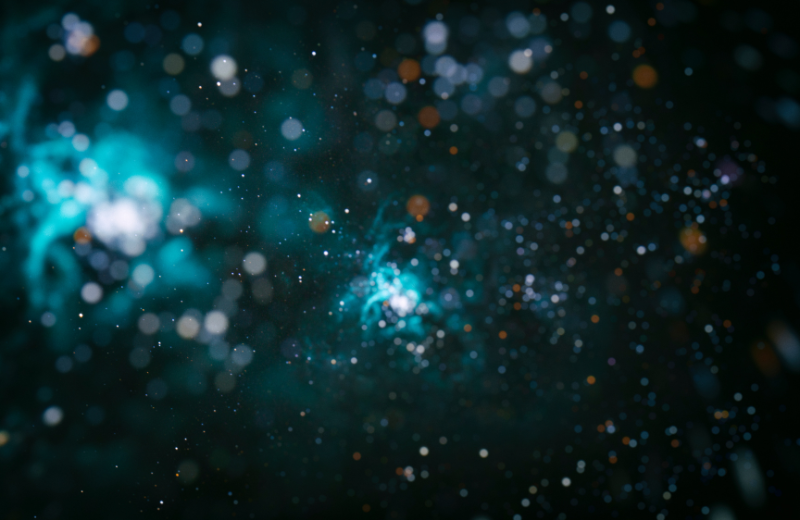The Mensa constellation may not be as famous as Orion or the Big Dipper, but it holds its own special place in the sky. Whether you're an astronomy enthusiast or someone curious about the lesser-known constellations, Mensa has fascinating features worth exploring. In this guide, you'll learn about its stars, its history, and how to spot it in the night sky.
Jump to:
Recommended for you!
Best SellersWhat Does the Mensa Constellation Represent?
Mensa, derived from the Latin word for "table," was named after Table Mountain in South Africa by French astronomer Nicolas-Louis de Lacaille. It’s one of the faintest constellations in the sky, and its location makes it visible primarily in the Southern Hemisphere.
Unlike many constellations that have a mythological or symbolic origin, Mensa is named after a geographical feature. Its stars are relatively dim, which makes it less prominent, but no less intriguing for those willing to seek it out.
What Does Mensa Look Like?

Mensa isn’t a constellation that stands out immediately; its stars are faint, making it difficult to see without clear, dark skies. When you do spot it, it resembles a simple, table-like pattern, fitting its name. With no bright stars to mark its outline, Mensa is often overlooked, but once you find it, its simplicity is part of its charm.
The Mensa Constellation Myth
Interestingly, unlike many constellations, Mensa doesn't have a traditional mythological story behind it. While many constellations were named after figures from Greek or Roman mythology, Mensa is more modern. Named in the 18th century, its story is rooted more in geography than in mythology.
How Many Stars Are in Mensa?
Mensa doesn’t boast a large number of stars, and those it does have are dim. The brightest star, Alpha Mensae, barely reaches a magnitude of 5.09, meaning it’s not easily visible to the naked eye. However, with a good telescope, you can discover several interesting stars within its boundaries.
Although there aren’t many prominent stars in Mensa, it holds a special claim to fame: part of the Large Magellanic Cloud (LMC), a satellite galaxy of the Milky Way, lies within its borders. This makes Mensa a great constellation for those interested in deep-sky observations.
Nebulae in the Mensa Constellation

While Mensa's stars may not be dazzling, the constellation contains nebulae and other deep-sky objects thanks to its intersection with the Large Magellanic Cloud. One of the most notable is the Tarantula Nebula, a vast, bright star-forming region that is a delight for astronomers with a good telescope.
The presence of these nebulae, combined with the galaxy’s edge, makes Mensa a favourite for deep-sky observers and astronomers looking to explore the southern skies.
Finding Mensa in the Sky
Mensa is best observed from the Southern Hemisphere, particularly during the summer months. The constellation sits near the south celestial pole and lies in close proximity to the more prominent constellation Dorado. Due to its faint stars, locating Mensa can be tricky without ideal conditions, but summer evenings provide the best chance for observation.
Locating Mensa
To spot Mensa, start by identifying the nearby Large Magellanic Cloud or the constellation Dorado. From there, you can trace your way toward Mensa. Unlike brighter constellations, Mensa’s stars are subtle, so having a star chart or an astronomy app can be a helpful guide.
Viewing Mensa with Binoculars or a Telescope
- With Binoculars: While the stars of Mensa are faint, binoculars can assist in bringing out more detail, allowing you to see the constellation’s subtle shape and its dim stars more clearly.
- With a Telescope: Using a telescope opens up a view of deep-sky objects within Mensa’s borders, including the intriguing nebulae in the Large Magellanic Cloud, providing an enhanced experience of this lesser-known constellation.
The Best Viewing Times
For the clearest view of Mensa, aim to observe during the Southern Hemisphere’s summer nights. January and February offer an excellent window of opportunity for spotting this constellation. A dark sky location, free of light pollution, will maximise your chances of clearly seeing Mensa’s stars.
Though primarily a Southern Hemisphere constellation, those in northern tropical regions might catch a glimpse, though it will be low on the horizon and only briefly visible.
Recommended for you!
Best SellersFun Facts About Mensa
- It’s faint: Mensa is the 75th largest constellation, but its stars are so dim that it’s hard to spot without ideal conditions.
- Named after a mountain: Unlike constellations named after mythological figures, Mensa takes its name from Table Mountain in South Africa.
- Home to the Large Magellanic Cloud: Part of this neighbouring galaxy lies within Mensa, making it a treasure trove for deep-sky observation.
- No bright stars: The brightest star in Mensa, Alpha Mensae, is only visible under very dark skies with no light pollution.
Study Astronomy for £29
The Mensa constellation is a stunning and significant part of the night sky, offering beauty and rich history. If you're inspired to delve deeper into the wonders of astronomy, why not explore the Astronomy Diploma Course with Centre of Excellence? Whether you're a beginner or someone with more experience, this course will guide you through everything you need to know about the stars, constellations, and galaxies. And for a limited time, you can enrol for just £29!













